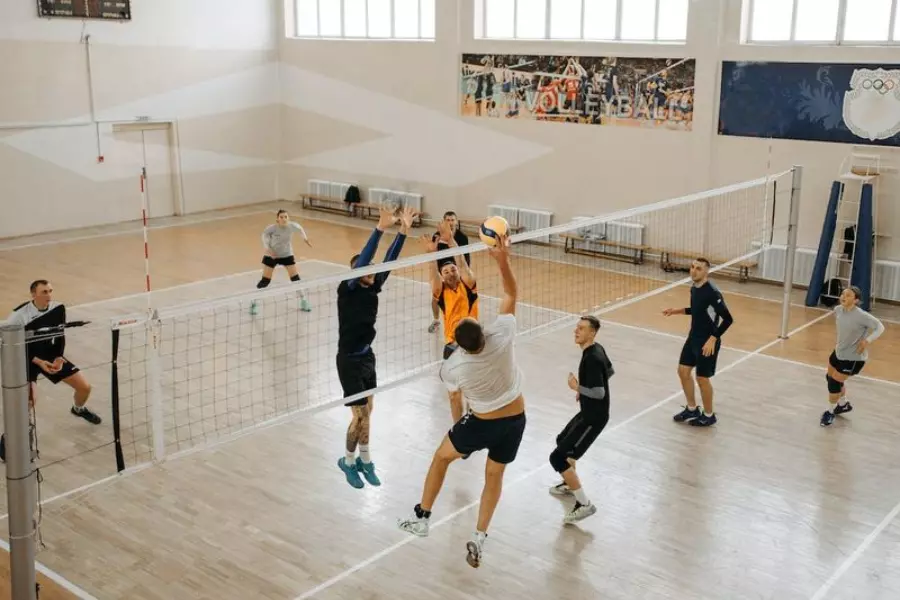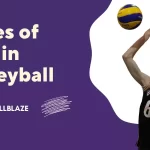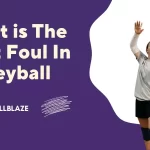In volleyball, players must constantly anticipate their opponent’s next move and be ready to react in an instant. The sport rewards strategy, athleticism, and teamwork.
There are six actions of Fundamentals in Volleyball that all players are constantly repeating throughout a volleyball match, which can seem complicated with all the different movements.
The Volleyball Fundamental Skills Are:

When you don’t know how to serve, it’s no use mastering your blocking skills. Some skills will inevitably be used more often than others, but these are all fundamental skills you’ll learn as you progress.
These tips will help you if you teach volleyball in a physical education class or if you are a volleyball player who is working on the fundamentals of the game. Click on the links below to learn more about each topic and to find some helpful drills.
Serves, passes, sets, spikes, blocks, and digs are examples of such actions.
1. Serving:
Volleyball serves are the first contact in the game, and they are a great opportunity to gain an advantage over your opponents. This is an essential skill for all players, as it gives your team momentum and shuts down your opponent’s momentum.
Serving is not just about scoring points; it can also be used to break up an opponent’s formation and create scoring opportunities in the future. Using a skillful serve or a weak passer against the setter can cause the opposing team to panic, creating more scoring opportunities for your team.
Various types of serves exist, such as underhand, overhand, and jump serves. The floater and the topspin are examples of more advanced serves. You need to practice accuracy and consistency to master any type of serve, regardless of which you choose.
2. Passing:
In tennis, this is the ball that is received from the opponent’s serve or hit. The purpose of passing is to maintain possession and set up a play on offense. Passing involves getting into position, keeping the arms straight and the feet parallel, extending our knees forward, and making contact with the ball with our forearms.
To facilitate offensive plays for your team, the ball should be passed high to your setter. In volleyball, pass-set-spike is the first step of the basic pass-set-spike sequence, which is the last step of the basic pass-set-spike sequence.
3. Setting:
An offensive play begins with setting or overhead passing that determines which player will spike or attack. Setters usually do this as the second step in pass-set-spike sequences.
To pass to the right player, the setter needs good hand-eye coordination and fast decision-making skills. The setter also needs to be able to identify the weak spots in the opponent’s defense and where they are.
A triangle should be formed with the thumb and fingers by the player when setting. Knees and elbows should be bent slightly, with fingers relaxed but steady, and hands above heads. Extending their knees and straightening their arms when they are about to set will help them follow through with the motion with their entire body.
In order to make hitting easy and comfortable for their hitters, setters want to create high and accurate ball trajectory.
Playing in a competitive setting allows setters to change the pace of the attack by setting faster when they are more experienced and comfortable with their players. The hitters must coordinate this with you, but when done right, it can be devastating.
Also, read Opposite Hitter Position In Volleyball
4. Attacking:
Pass-set-spike is completed with the attack step, also known as hitting. In spite of the fact that there are numerous ways to attack a ball, spiking is the most common and consistently effective method. During spiking, the ball is smashed onto the opponent’s side of the court by combining jumping and powerful arm swings.
A volleyball player can use many different types of spikes as they become more advanced:
Cross-court spike: An attack that crosses the court diagonally from one corner to the other. An open area of the court is often targeted with this type of spike to avoid the opponent’s blockers.
Line spike: This is a straight down the line attack that goes either left or right ahead of the hitter. The spike treads near the line of out-of-bounds, making it hard to block as well as land.
Tool spike: The goal of a tool spike is to intentionally deflect the ball out of bounds by hitting off the opponent’s blockers. As the opponent’s blockers are positioned close to the net, attackers often use this type of spike.
There are more spiking techniques than the ones listed above, but these are the most common.
The player must be athletic, have good timing, and have good jumping power. Spiking effectively requires a quick three-step approach, an accurate jump, and forceful hitting of the ball.
5. Blocking:
A block is a defensive skill that can be used as a means of stopping an opposing team’s attack as well as a means of scoring points.
To better predict the opponent’s attack strategy, blockers must pay attention to the opposing setter as well as the offensive attacks of the opposing team. The ability to react quickly to an attack and arrive in position before the attack is complete is crucial for blockers.
It is important that blockers stand with their elbows out in front of them and their palms facing forward so that they can block well. For blockers to effectively defend their positions against attacking opponents, they need to jump in front of their attacks and then explode with leaps and raise their arms in a wall formation.
For a blocker to effectively stop an opponent’s attack, he or she must have good timing, vertical height, and hand positioning.
To be amazing in blocking, you have to have the ability to predict where the ball will go and be in a position to block right after the ball is set. Their blocks will also be improved by studying the hitter’s habits and how they like to hit throughout the match.
6. Digging:
A dig is a defensive technique used to keep the ball from hitting the ground. The ball is often not directly thrown at the player, therefore an underhand pass would be difficult or impossible. It is essential that the player sinks their hips low to the ground and raises their heels slightly to get into a digging position.
To make an underhand pass, they must extend their arms. Using the lower body to move the upper body, the player digs for the ball by pushing off their toes. It is also important for players to keep their eyes open for the ball, even though diving for the ball is often unnecessary if they are already positioned where the ball is likely to go.
Since liberos are a team’s defensive core, they dig the most. Check out our blog to learn more about liberos and their unique role in volleyball.
The player must be able to react quickly, move quickly, and control his or her body well while digging. It is important for a player to be in position to receive the ball before the attack is finished so that he can dig effectively.
Tracking the ball and being aware of your blockers are key to this. The players who dig must cover the areas that their blockers cannot defend and use their blockers as a wall. A clean pass to a teammate must also be able to be made by them.
You can also read What Is A Dig In Volleyball?
Conclusion
Volleyball’s basic fundamental skills are the foundation for success. The fundamental elements of a game, including serving, passing, setting, attacking, and blocking, must be mastered by all players, whether they are beginners or seasoned professionals. As well as contributing to individual proficiency, these skills facilitate cohesive teamwork.
The ability to understand and execute these fundamentals enhances a player’s overall performance and makes a team more dynamic and competitive. For volleyball to be successful on the court, it is important to master these basic skills and refine them continually.
An understanding of volleyball’s dynamic and exciting nature requires acknowledging these fundamental skills, regardless of whether one is a player or a fan.
Also, read How to Measure for Volleyball Knee Pads?





